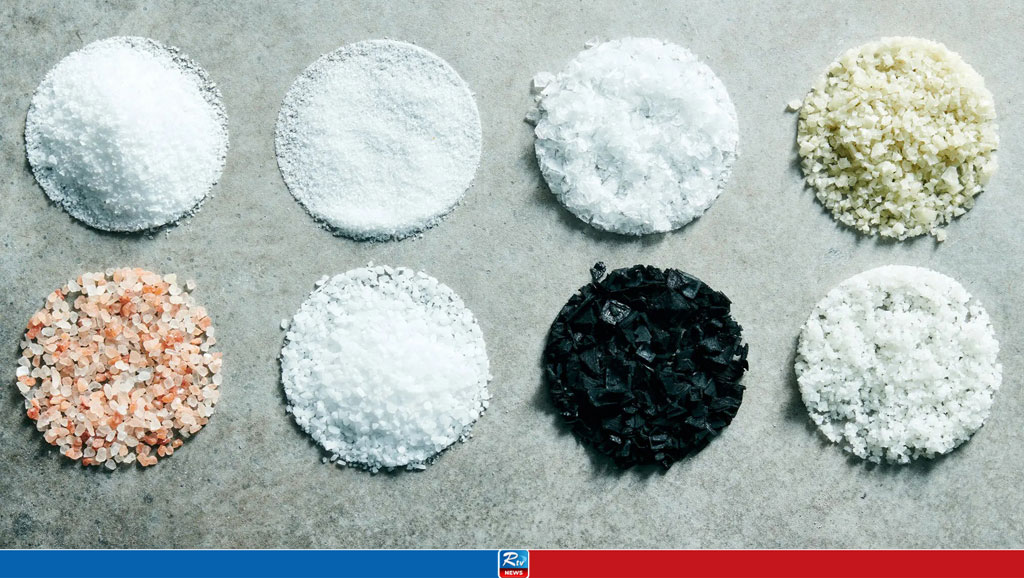Here’s what to know about different salts

It can often be confusing to decide from a variety of salt types such as table salt, kosher salt, finishing salt. Here's a little explanation and some guidance.
A little background information is helpful for truly understanding salt. For thousands of years, the production of it has been central to human culture. Naturally, salt is necessary for our survival. Sodium chloride is necessary for neuron, muscular, and digestive function as well as for controlling our body's fluid balance.
There is very little salt naturally found in plants, thus early humans obtained all the salt they required by consuming animal flesh.
The specific date and technique by which humans discovered how to make salt—by mining rock salt from the soil or by evaporating seawater—are unknown, although it most likely occurred during the Neolithic era, when agriculture and animal husbandry began to flourish. As humans increased their dependence on vegetables and grains, they had to start salting their food.
And, as early civilizations grew, salt became one of their key economic drivers, according to Mark Kurlansky, author of "Salt: A World History."
Salt was inextricably linked to the geography and climate of its production until its mass manufacture in the early twentieth century.
Pre-industrial salt, according to Mark Bitterman, author of four books on salt and owner of the Meadow, a small chain of specialist salt shops, was the first local meal, a symbol of place and time.
What to use when
Salt comes in a bewildering multitude of varieties. Here's a primer on some of the most often used salts and how to use them.
Table Salt
Table salt is widely available and cheap, and it can be found in saltshakers all throughout the world. The majority is produced by pumping water into salt mines to dissolve the minerals, then evaporating the water under vacuum and separating the sodium chloride.
The tiny, delicate crystals have a consistent size and hue. To assist guard against iodine deficits, table salt is iodised, which demands the addition of chemicals such as dextrose or sodium bicarbonate for stability.
When sprinkled on food or while cooking, table salt dissolves quickly and can taste harsh and slightly metallic, as well as stridently salty. However, it can be used as an all-purpose cooking salt and is interchangeable with fine sea salt.
Kosher Salt
What defines kosher salt is its large, coarse grains. The term is a shortening of koshering or kashering salt, because its traditional use is to remove the blood from meat, as required by Jewish dietary laws. The large salt crystals draw out blood without dissolving much, which keeps the meat from becoming oversalted. And the coarse grain is perfect for making a salt crust, a traditional method for cooking whole fish that results in especially tender, juicy flesh.
Like table salt, most kosher salt is industrially produced. It isn’t iodized, but might contain anticaking agents, which will be listed on the label.
Common Sea Salt
Most inexpensive sea salt is industrially produced from seawater. Fine sea salt is often used in baking because of its ability to dissolve quickly, and can be used in place of table salt in cooking.
Traditional Sea Salts
Built on age-old traditions, sea salts like fleur de sel, sel gris and flaky salt are all made by evaporating seawater, either in the sun in warm climates, or by boiling. They can have a variety of trace minerals that add character, color and texture. Used as finishing salt, traditional sea salts can bring plenty of textures and flavors to the table.
Sea Salt Flakes
Flake salt is made by encouraging salt crystals to form slowly on the surface of the brine, so they can get especially large. Flake salt adds a gentle snap and bright saltiness to dishes. Because the flakes are so thin, you can add a fairly large pinch to dishes without oversalting, and this produces a crackly texture that dissipates quickly.
Fleur de Sel
Fleur de sel, also called flor de sal, translates to “the flower of salt,” a nod to its desirability. A product of warm, sunny climates, it’s been made in the same way for ages. Fleur de sel is not refined, so it contains whatever minerals are present in the water. You can use fleur de sel to finish any dish where you want a crunch that’s softer and more crumbly than flake salt, with a more complex flavor. It works particularly well with desserts, especially those that include caramel and chocolate.
Sel Gris
Sel gris, gray salt, is produced in the same types of solar- and wind-evaporating salt pans as fleur de sel, but is harvested from the clay bottom rather than the surface. It shines when sprinkled on roasted meats, fish and vegetables, but might be too earthy-tasting for desserts.
Himalayan Pink Salt
People have historically mined salt resources, notably those on Pakistan's Potwar Plateau, which is the source of Himalayan pink salt. It receives its pink color from trace minerals, which also lend it a moderately peppery flavor. Because of its solid texture, it is frequently marketed in grinders. It's a lovely finishing salt with a crisp texture for powerfully flavored foods.
It's also used to make cooking slabs that can be heated to 900 degrees. Mr. Bitterman, the author, suggests grilling slabs of Himalayan pink salt and using them to weight down poultry instead of a brick.
Source: New York Times
Comments

 Live Tv
Live Tv




